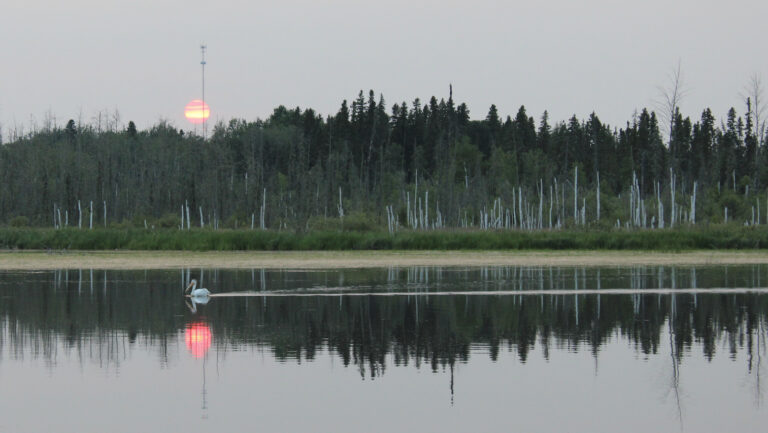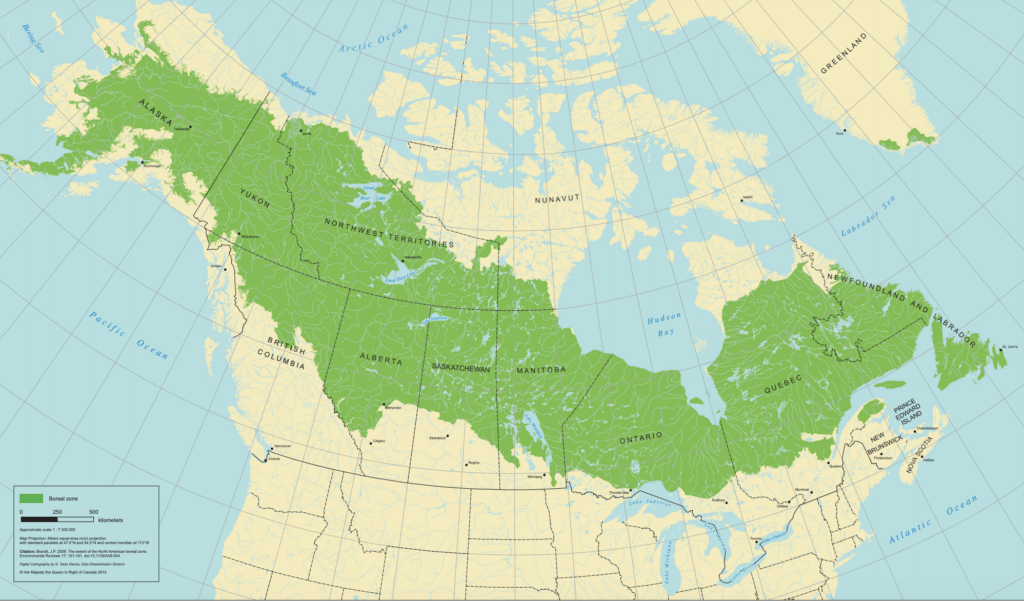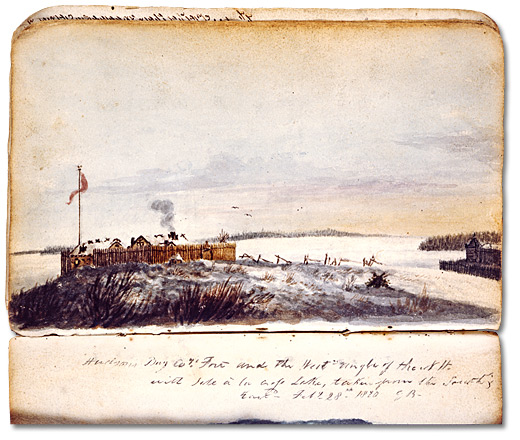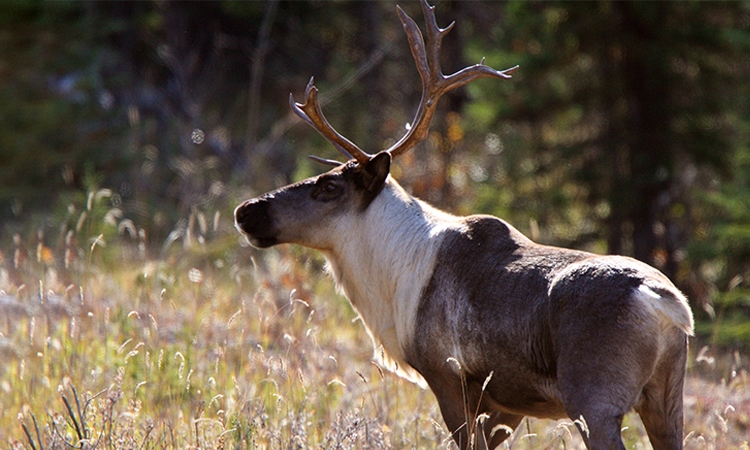
The community of Île-à-la-Crosse is partnering with Nature Canada to promote conservation of the N-14 Fur Block in northwest Saskatchewan by developing the Sakitawak Indigenous Protected and Conserved Area (IPCA).
Sakitawak is the original name for Île-à-la-Crosse and means “where the rivers meet” in Cree. Located in the heart of the Boreal Forest, the area is abundant in freshwater fisheries and old-growth pine forests — where species at risk such as the Woodland Caribou live.
The Sakitawak IPCA is one of four Métis-led conservation projects funded by the Government of Canada to create Indigenous-led protected areas. If protected, it will be the third largest IPCA in Canada, covering 22,000 square kilometres or 523,000 hectares.
‘Critical time’ to protect the Boreal

Sakitawak Manager Peter Durocher said the IPCA launched last July following setbacks due to the pandemic. He said his people “just want a say” in what happens on their traditional territory.
“There are certain places like the Pine River Valley where there are medicines that only grow there and not anyplace else. We just want a say in what’s happening,” Durocher said.
“The thing that people don’t really understand is that there are still a lot of people that live traditionally. Here in the north of Saskatchewan a lot of people live ‘off the land’ so to speak.”
Nature Canada is working with Sakitawak, and the community of Île-à-la-Crosse to help share their stories with Canadians. The hope is to raise awareness in Saskatchewan and nationally to help Sakitawak secure financial support to continue its work.
Nature Canada Executive Director Graham Saul said the organization wants to decolonize its approach to conservation, and centre Indigenous-led projects.
“The Indigenous Peoples of Sakitawak have stewarded this corner of the Boreal Forest for generations,” Saul said.
“This opportunity to work with and learn from the Métis of Sakitawak is coming at a critical time when protecting the Boreal is key to combating the twin crises of species loss and climate change.”
The partnership with Nature Canada has allowed Durocher and his team to hire four youth who will focus on bringing awareness to the traditional and environmental importance of the area.
‘Way of life’ for an historic community

Île-à-la-Crosse Mayor Duane Favel is a Sakitawak board member. He said the community hopes to protect the N-14 Fur block to safeguard the area for future use by generations to come and for the survival of the many species who call the area home.
Île-à-la-Crosse is the second oldest community in Western Canada and was designated a National Historical site in 1954.
The community was established in 1776 as both the Northwest Company and the Hudson’s Bay Company that fought to dominate the fur trade. Generations of land users in the area pass down their traplines in the family.
Trapping blocks were first established to help the beaver population recover, reduce conflicts and maintain forest traplines as commercial entities by restricting fur harvest to a number of trappers in each area. Each block is composed of members who are licenced trappers.
“These partnerships are key to the long-term success of our work. We cannot do this alone,” Favel said.
“The stature and history of Nature Canada will allow us to communicate our goals to a larger audience in Canada whose interests in conservation are common and global in intent.”
Logging companies have shown interest in cutting that area and Durocher hopes industry will consult with land-users on an “equal playing field” before moving forward with any plans to cut. Plans to cut this past summer were delayed after a spike and drop in lumber prices.
“People don’t understand this is our way of life here. That tree growing in the bush right now is worth more standing up and growing than it is being cut down and hauled to Big River,” Durocher said.
“If I ever need shelter, I can go sleep under that tree. If I ever need wood, I can cut the branches from the tree or if I ever need food, I can kill the animal that eats off of that tree.
“So that to me is worth more than that tree being cut down by somebody from down south with a big machine, hauled to Big River, cut up for lumber and sold to the United States. Because that doesn’t help me at all as an Indigenous person.”
‘At the brink’ of a climate crisis

Durocher said conservation is “very important in our future.” Even more so because of climate change, global warming, and the role the Boreal Forest plays in trapping carbon dioxide in the ground. He said if the forests are all cut down carbon will have nowhere to go but the air.
According to Ducks Unlimited Canada the estimated total soil organic carbon stored by the N-14 Fur Block, wetland and upland areas combined, is around 225 million tonnes — which is equivalent to 823 million tonnes of atmospheric CO2. That’s equivalent to the total annual CO2 emissions from an estimated 179 million cars, or 20 years of emissions from 8.9 million automobiles.
“Conservation is important if we do it right. I want to do it right now and not wait till it’s too late — because right now we’re right on the brink of a climate crisis,” Durocher said.
“Elders are seeing animals that we’ve never seen before; we’re seeing birds that we’ve never seen before. Whether people believe in climate change or not, it’s happening.”
They hope to protect one of the largest populations Woodland Caribou in Saskatchewan. Wetlands and bogs are vital for Woodland Caribou as they are home to unique plants that the caribou thrive from.
“I do not want to be the last generation that sees a Woodland Caribou. If we have a chance to protect them, let’s protect them. I’ve been a land-user, a trapper, and a fisherman for the last 44 years, and I’ve noticed that caribou are disappearing here. ” Durocher said.
“All we want to do is protect a certain amount of area from industry. There are some old growth forests here that we wouldn’t mind protecting. Woodland Caribou is a species that’s at risk and needs old growth to survive. If we can protect that area so that those caribou can survive and maybe even grow, I think it will benefit everybody.”
Nature Canada says respecting Indigenous rights and supporting Indigenous-led conservation are key to achieving the goal of protecting 30 percent of lands and waters by 2030, which is a target Canada has committed to internationally.
